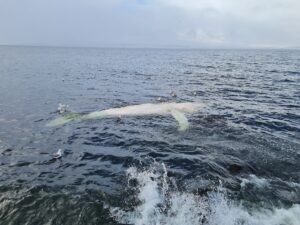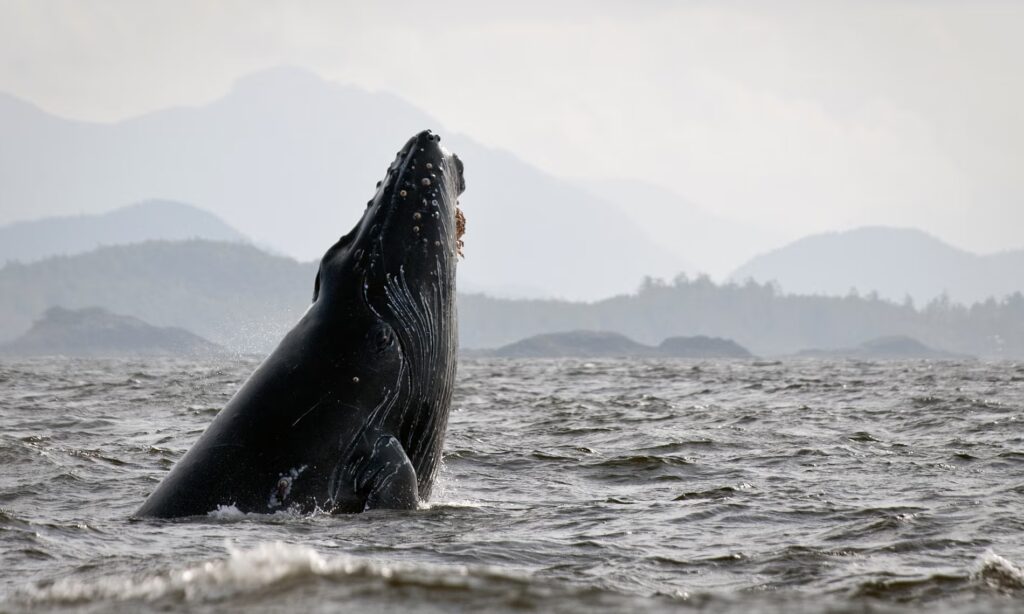Bjarni Benediktsson breytti afstöðu sinni til afgreiðslu á umsókn Hvals hf. um hvalveiðileyfi
Samkvæmt frétt RÚV frá 8. apríl 2025 taldi Bjarni Benediktsson sig upphaflega vanhæfan til að afgreiða umsókn Hvals hf. um hvalveiðileyfi vegna tengsla við fyrirtækið. Síðar breytti hann afstöðu sinni og taldi sig hæfan til að taka ákvörðun í málinu. Þetta vakti athygli og umræður um hæfi ráðherra til að taka ákvarðanir í málum þar sem persónuleg tengsl kunna að vera til staðar.
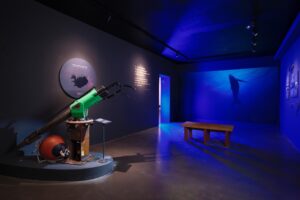
Hvalasafnið á Húsavík hefur á síðustu vikum unnið að uppfærslu á sýningu sinni um sögu Hvalveiða á Íslandi, enda hefur sú saga verið í mikilli þróun síðustu árin. Við hvetjum fólk sem hefur áhuga á að heimsækja okkur og skoða nýju sýninguna.
A Whale Carcass in North Iceland
Last week staff from the Húsavík Whale Museum ventured to Eyjafjörður to take a closer look at a whale carcass on the beach below the farm Neðri-Dálksstaðir, as reported by mbl:
https://www.mbl.is/200milur/frettir/2024/03/26/hvalshrae_i_fjorunni_nordan_svalbardseyrar/.
After hiking down to the beach accompanied by some locals, the whale carcass was clearly visible, although the high-tide had submerged it.
The weather was cold and snowy, and a flock of northern fulmars could be seen sitting around it, occasionally pecking at the dead body.
The carcass was of a small humpback whale (Megaptera novaeangliae), discoloured from the decomposition.
It seems more than likely that the carcass is the same one spotted in Hrísey island last March, as reported by Vísir: https://www.visir.is/g/20242541562d/hrae-hnufu-baks-i-hris-ey-legid-lengi
The winds and currents seem to have brought it further into the fjord, and it could end up traveling more before breaking down completely. But only time will tell.
Umboðsmaður Alþingis gagnrýnir frestun hvalveiða
Umboðsmaður Alþingis hefur skilað álitinu sitt vegna kvörtunar Hvals hf. um frestun hvalveiða. Hann telur að reglugerð um frestun hvalveiða hafi ekki nógu skýra stoð í lögum og hafi ekki uppfyllt kröfur um meðalhóf. Umboðsmaður bendir á að lög um hvalveiðar hafi ekki verið endurskoðuð í ljósi áætlanir um dýravelferð, sem fram koma í Alþjóðahvalveiðiráðinu.
Álitinu fylgir tímalína atburða frá eftirlitsskýrslu MAST árið 2022 fram að nýlega álitinu í janúar 2024. Umboðsmaður óskaði eftir upplýsingum frá matvælaráðuneytinu um reglugerð um tímabundna frestun á upphafi hvalveiða. Hann býður upp á endurskoðun á reglugerðum um hvalveiðar og beinir til ráðuneytisins að hafa sjónarmiðin í áliti hans í huga til framtíðar. Álitinu fylgja ekki sérstök átök eða framhaldsátak, en umboðsmaður fellst á skýringar ráðuneytisins um dýravelferðarsjónarmiði við hvalveiðar, hins vegar bendir á að meðalhóf og verndun hvalastofnsins ætti að vera grundvöllur laga á þessu sviði.
Lesið meira hér:
https://www.stjornarradid.is/efst-a-baugi/frettir/stok-frett/2024/01/05/Umbodsmadur-Althingis-skilar-aliti-vegna-frestunar-hvalveida/

Mynd frá Hafró
Rákahöfrungur með þumla
Í júlí 2023 fundu rannsakendur frá Pelagos Hvalrannsóknarstöðinni sérstakann rákahöfrung með afmynduð bægsli, sem líktust þumlum. Höfrungurinn sást synda með hópnum sínum og virtist þessi útlitsgalli ekki há honum.
Sérfræðingar telja að afmyndunin sé líklega erfðagalli þar sem bæði bægslin líta svona út. Þrátt fyrir að hvaldýr, þar á meðal rákahöfrungar, hafi fingurbein inn í bægslunum, sem leyfar af þróunarsögu hvala frá landgengum spendýrum, virðist eitthvað af þeim beinum vanta í þennan tiltekna höfrung. Þrátt fyrir þetta afbrigði, virðist höfrungurinn vera við góða heilsu.
Lesið meira hér:
https://www.livescience.com/animals/dolphins/extremely-rare-dolphin-with-thumbs-photographed-in-greek-gulf
Flæktur hvalur frelsaður í Alaska!
Blue whale and orcas spotted in the bay
The whale watching companies North Sailing and Gentle Giants have posted on their facebook pages that a blue whale had been spotted in the bay yesterday, the first one of the season.
A pod of orcas was also spotted yesterday, as have other species in the last few days, which tells us that the whale watching season has a great start this year.
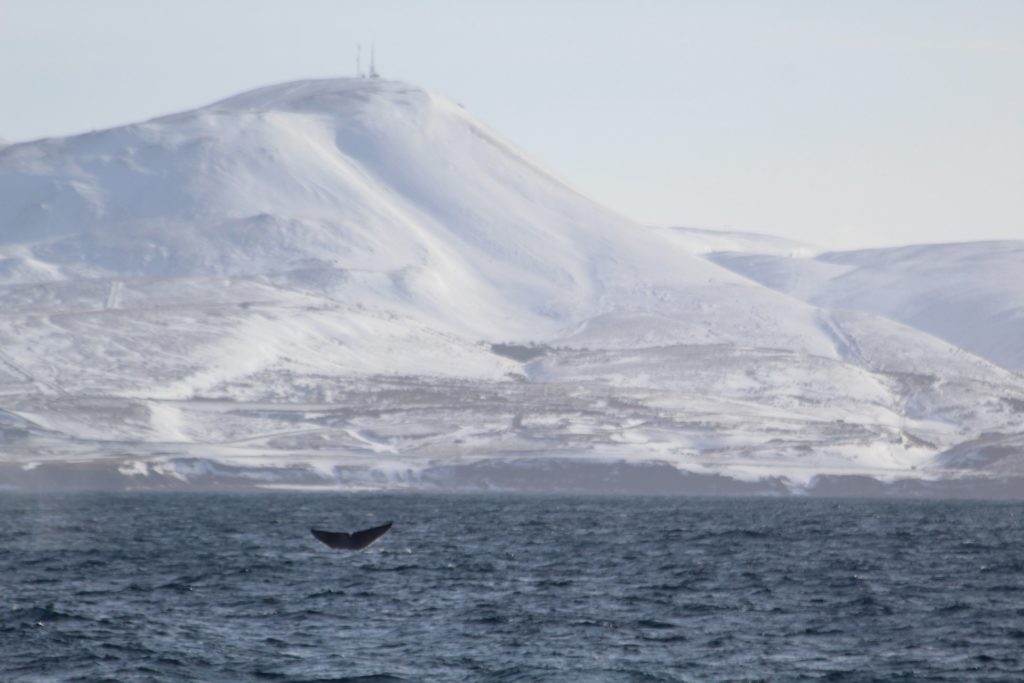
Photo: Northsailing
Steypireyður og háhyrningar í flóanum
Hvalaskoðunarfyrirtækin Norðursigling og Gentle Giants lýsa því á fésbókarsíðu sínum að í gær hafi sést til steypireyðar í flóanum. Er það í fyrsta skipti á vertíðinni sem það gerist.
Einnig sást hópur af háhyrningum, auk þess sem aðrar tegundir hafa sést síðustu daga, svo segja má með sanni að hvalaskoðunarvertíðin sé farin vel af stað.

Mynd: Gentle Giants
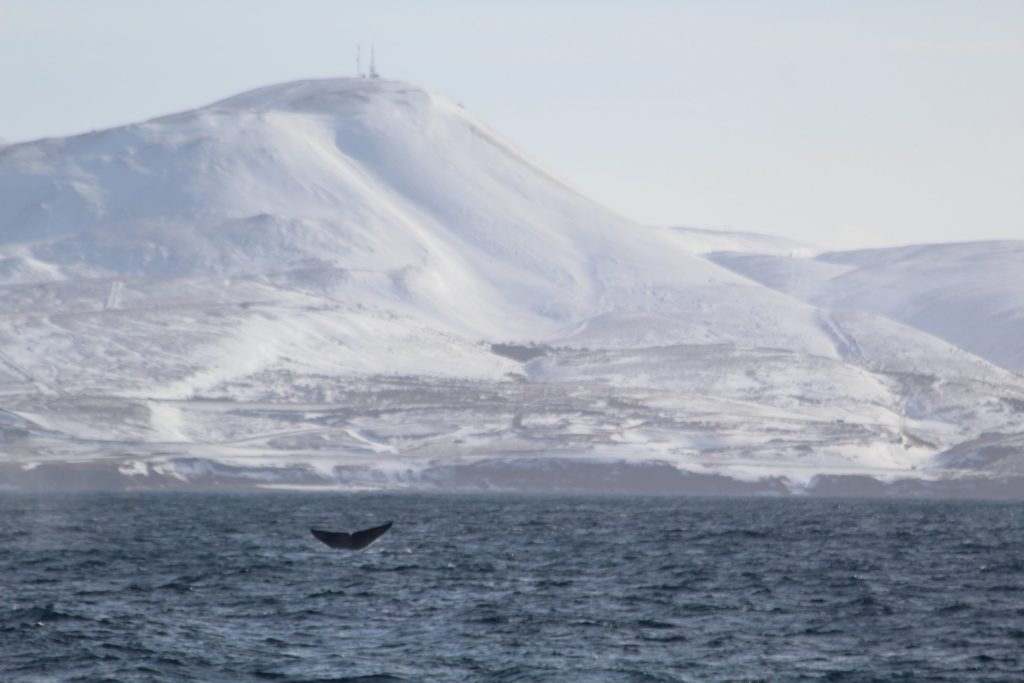
Mynd: Norðursigling
